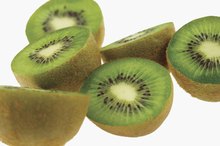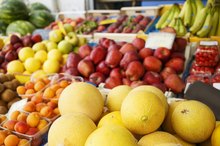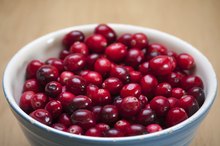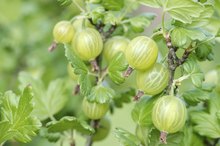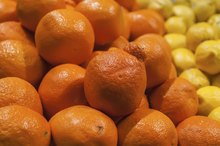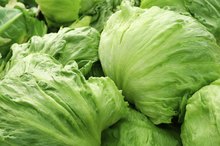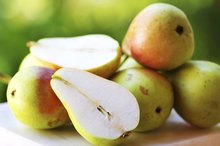What does fact checked mean?
At Healthfully, we strive to deliver objective content that is accurate and up-to-date. Our team periodically reviews articles in order to ensure content quality. The sources cited below consist of evidence from peer-reviewed journals, prominent medical organizations, academic associations, and government data.
The information contained on this site is for informational purposes only, and should not be used as a substitute for the advice of a professional health care provider. Please check with the appropriate physician regarding health questions and concerns. Although we strive to deliver accurate and up-to-date information, no guarantee to that effect is made.
What Vitamins Do Strawberries Contain?
Eating healthfully while indulging in a delicious, sweet confection may seem like a paradox. However, one of nature's offerings is indeed a rare and nutritious treat that proves that nutrition and enjoyment can go hand-in-hand. The strawberry contains a tremendous amount of vitamins in a juicy red package -- one that is a friend to both the taste buds as well as a staple of a healthy diet.
Vitamin C
Strawberries rival citrus fruit in their content of vitamin C, also called ascorbic acid. One serving of strawberries -- about eight strawberries -- yields as much vitamin C as an orange, reports the California Strawberry Commission. This essential vitamin promotes healthy teeth and gums, aids in wound healing, and maintains tissue within the body, according to the National Institutes of Health's MedlinePlus Medical Encyclopedia 2.
Vitamins A, E and K
Calories in One Kiwi Fruit
Learn More
Other crucial vitamins contained within the strawberry are also vital to general health and wellness. Vitamin A plays a key role in healthy skin, mucous membranes and bones. Reports MedlinePlus, the sweet red fruit also adds vitamin E to a balanced diet, which promotes healthy red blood cells as well as enhances the body's absorption use of yet another strawberry-borne nutrient that helps blood coagulate -- vitamin K 2.
- Other crucial vitamins contained within the strawberry are also vital to general health and wellness.
- Reports MedlinePlus, the sweet red fruit also adds vitamin E to a balanced diet, which promotes healthy red blood cells as well as enhances the body's absorption use of yet another strawberry-borne nutrient that helps blood coagulate -- vitamin K 2.
B Vitamins
Nutrients which help many aspects of overall health, B vitamins are found in abundance within the strawberry. These include B1/thiamine, B2/riboflavin, B3/niacin and B6. B vitamins play important roles in overall wellness, beneficial to many integral elements of physiological health, such as:
- as metabolism
- the central nervous system
- heart function
- nerves
- body growth
Folate
Foods and Vitamins to Help Heal Nerve Endings
Learn More
Folate, another B vitamin, is a valuable addition to the array of vitamins in strawberries. This particular vitamin is essential to the formation of DNA, and promotes healthy tissue growth and functional cells within the body. Folate also helps vitamin B12 in the formation of red blood cells. Low levels of folate have been linked to birth defects, so this singularly important vitamin is essential to both expecting mothers and their fetuses.
- Folate, another B vitamin, is a valuable addition to the array of vitamins in strawberries.
- Low levels of folate have been linked to birth defects, so this singularly important vitamin is essential to both expecting mothers and their fetuses.
Related Articles
References
- University of Illinois Extension: Nutrition -- Strawberries and More
- MedlinePlus: Vitamins
- Office of Dietary Supplements. Vitamin B12. Updated 2020.
- Johns Hopkins Medicine. Vitamin B12 deficiency anemia. 2020.
- Coppen A, Bolander-Gouaille C. Treatment of depression: time to consider folic acid and vitamin B12. J Psychopharmacol. 2005;19(1):59-65. doi:10.1177/0269881105048899
- Kannan R, Ng MJ. Cutaneous lesions and vitamin B12 deficiency: an often-forgotten link. Can Fam Physician. 2008;54(4):529-532.
- Markišić M, Pavlović AM, Pavlović DM. The impact of homocysteine, vitamin B12, and vitamin D levels on functional outcome after first-ever ischaemic stroke. Biomed Res Int. 2017;2017:5489057. doi:10.1155/2017/5489057
- Harvard Health. The A list of B12 foods.
- Harvard Health. Getting enough vitamin B12. 2020.
Writer Bio
A speech-language pathologist, Charlie Osborne has published articles related to his field. He was an associate editor and then editor for the American Speech-Language-Hearing Association Division 4 Perspectives in Fluency and Fluency Disorders. Osborne has a Master of Arts degree in communicative disorders from the University of Central Florida.
